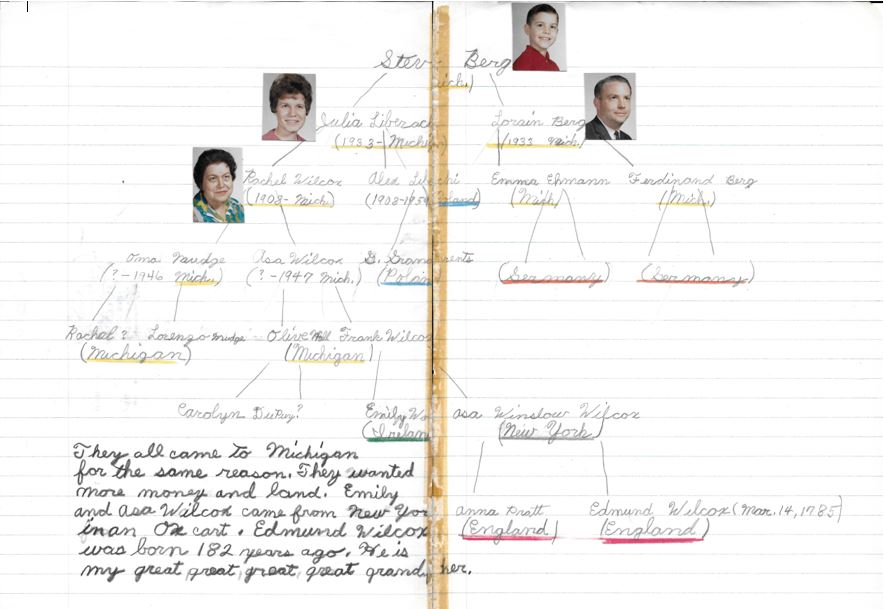Genealogy
Working on the family genealogy for me is a form of entertainment. I enjoy doing the research and putting the pieces of the puzzle together. While many genealogists are content to develop a skeletal view of their pedigree by recording only the birth, marriage, death of their ancestors, I am interested in details and stories. In other words, I want to put flesh on the bones of the skeletal outline. When I can not find such stories in order to write biographical sketches, I set the lives of the relatives in their socio-historical context.
Putting Flesh on the Bones
But First the Bones
Currently I have a Family Tree Maker database of over 8,000 individuals. Because the genealogy springs from entertainment and not a desire to necessarily document only my direct ancestors, the database I maintain includes documentation of the relatives who married into the family as well as individuals whom are considered family; individuals who would like be ignored by more traditional genealogists.
On my maternal grandmother's side—if one believes that Thomas Tracy (1610-1685) is the grandson of Richard Tracy (1503-1569)1 and what is written in the Saxon Chronicles—I can trace my pedigree back to my 52nd great grandfather, Odin. This is the same Odin from Norse mythology that I discuss in ancient world history. Therefore, I take humorous delight in telling my students that their professor is descended from the gods.
Go to the Liberacki-Wilcox-Berg Genealogy website.
Academic Crossover
Teaching
I am able to incorporate the Liberacki-Wilcox-Berg Genealogy into my teaching by citing family members as examples as well as by discussing research methodology. For example, I discuss Thomas Tracy (1610-1685) when I discuss how an historian handles conflicting evidence and why first person accounts can be problematic (e.g. Tracy might be lying about his grandfather). I cite Margaretha Henningsmith(1862-1929) as an example of how historians need to be aware of multiple spellings for names. Henningsmith has seven different spellings—at least that I have discovered so far.
Students sometimes find it difficult to understand that they can do quality research and still have nothing to show for it. When someone is worried that they are not finding materials even after extensive effort, I tell about how I have spend at least 50 hours of research over the past several years trying to find primary source evidence that Edmund Wilcox(1785-1866)is Asa Wilcoxson's (b. 1761)son.
I have also created lessons around other ancestors such as William de Traci (c. 1133 - c. 1225)in a lesson concerning "Truth vs. Truthfulness."
Writing
Because of my interest in genealogy, I was asked to review Andrea Stuart's Sugar in the Blood (2013). My review, "Sugar Barons of the Barbados," incorporates my genealogical research appeared in the International Agenda 13.1 (Winter 2014)which is published by the Schoolcraft College International Institute.
1Although Thomas Tracy claimed that Richard was his grandfather, there is not a definitive piece of evidence that confirms this claim.
